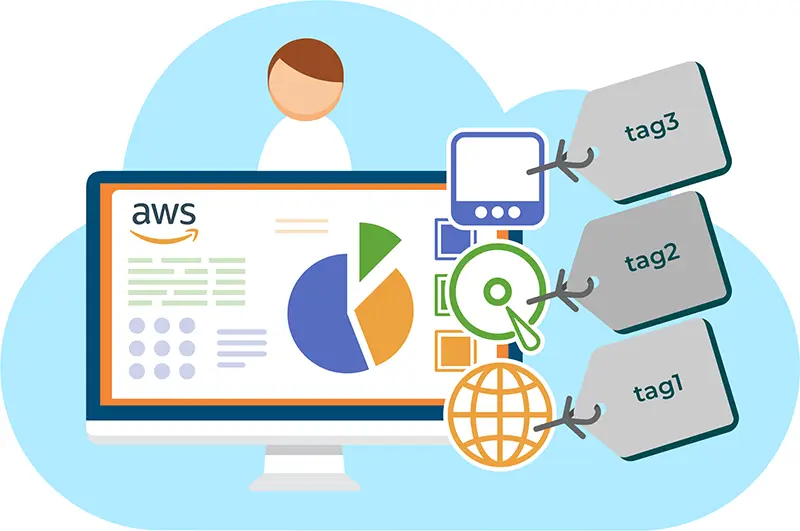O que são tags e como você pode gerenciá-las?
As tags ajudam você a gerenciar seus recursos, máquinas virtuais ou imagens e categorizá-los por proprietário, ambiente ou outra coisa para obter total transparência dos seus recursos de nuvem e eliminar alguns desafios de um processo de otimização de custos. As tags são pares de chave e valor simples e personalizáveis pelo usuário que são suportados por muitos serviços da AWS.
Você pode criar um conjunto de chaves de tag que se adaptem às suas necessidades para cada tipo de recurso. Esse conjunto de chaves de tag pode simplificar muito o gerenciamento de recursos e a otimização de custos da AWS. Depois de adicionar essas tags, você pode pesquisar e filtrar recursos com base nelas.

Regras para implementar a estratégia de marcação correta no ambiente AWS
Guia passo a passo para marcar recursos da AWS
Vamos direto para adicionar/criar tags:
A aba Tags na página principal permite que você aplique tags a ativos novos ou existentes a qualquer momento.



Você pode criar tags para uma instância específica. Para fazer isso, vá para a seção 'Instâncias' → selecione a instância de interesse -> selecione a aba 'Tags' e clique no botão 'Gerenciar Tags'. A janela a seguir será aberta diante de você, onde você pode adicionar ou remover tags para uma instância específica.

Um processo de marcação eficaz permite que as empresas alcancem total transparência de custo e uso da AWS. Uma estratégia de marcação é projetada para identificar os proprietários dos recursos, TTL, projeto ou equipe. É melhor evitar recursos sem marcações. Um sistema de marcação ajuda a analisar os gastos com a nuvem e implementar cenários de otimização de custos da AWS.